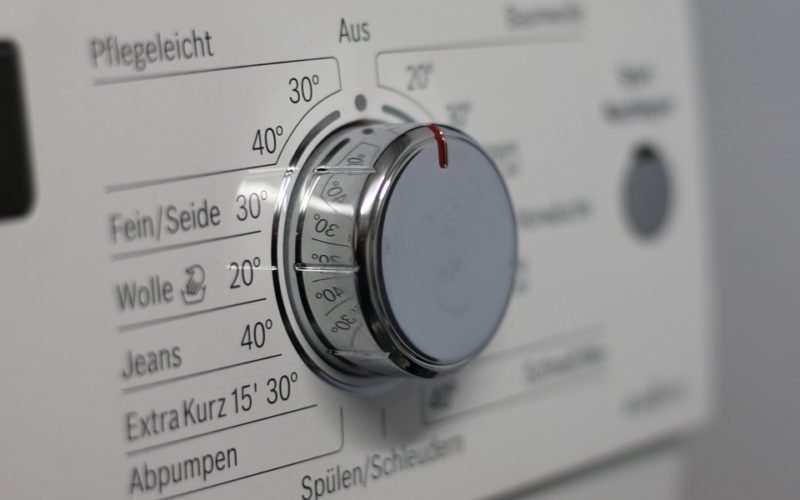In today's world, energy efficiency is more important than ever. Not only does making your home energy-efficient save you money on utility bills, it also reduces your carbon footprint and helps protect the environment.
Improve insulation and seal gaps
One of the most effective ways to improve your home's energy efficiency is by ensuring it is well-insulated. Proper insulation helps maintain a consistent indoor temperature, reducing the need for excessive heating in winter and cooling in summer. Begin by checking the insulation in your attic, walls, and floors. Adding or upgrading insulation in these areas can make a significant difference. Additionally, seal gaps and cracks around windows, doors, and any other openings to prevent drafts and heat loss. Weather-stripping and caulking are affordable solutions that can be easily applied to improve your home's insulation.
Upgrade to energy-efficient windows and doors
Old, single-pane windows and poorly fitted doors can be a major source of energy loss in your home. Consider upgrading to double or triple-pane windows, which provide better insulation and reduce heat transfer. Energy-efficient windows often come with low-emissivity (Low-E) coatings that reflect heat back into your home during winter and keep it out during summer. Similarly, installing energy-efficient doors can help prevent heat loss and improve your home's overall energy performance. Look for doors with an ENERGY STAR rating to ensure they meet high energy efficiency standards.
Install a programmable thermostat
A programmable thermostat is an excellent investment for improving your home's energy efficiency. It allows you to set specific temperatures for different times of the day, ensuring that your heating and cooling systems only run when needed. For example, you can program the thermostat to lower the temperature when you're at work or asleep and raise it when you're home and active. This not only saves energy but also extends the lifespan of your HVAC system by reducing wear and tear. Some advanced models even offer smart features like remote control via a smartphone app, making it even easier to manage your home's temperature.
Enhance bathroom efficiency
Bathrooms are often overlooked when it comes to energy efficiency, but they can be a significant source of water and energy waste. Start by installing low-flow showerheads and faucets, which reduce water consumption without sacrificing performance. Consider upgrading to a more efficient toilet that uses less water per flush. If you're undertaking a bathroom renovation, consult with a professional bathroom fitter to ensure that all fixtures and fittings are optimised for energy efficiency. Additionally, consider adding an extractor fan with a timer or humidity sensor to control moisture levels and reduce the risk of mould growth, which can affect indoor air quality and energy use.
Switch to energy-efficient lighting
Lighting accounts for a significant portion of your home's energy consumption. Replacing incandescent bulbs with energy-efficient alternatives like LED or CFL bulbs can dramatically reduce your energy usage. LED bulbs, in particular, use up to 75% less energy and last 25 times longer than traditional incandescent bulbs. Additionally, consider using dimmer switches, motion sensors, and timers to control lighting usage more effectively. Natural light should also be maximised wherever possible – open curtains and blinds during the day to reduce the need for artificial lighting.
Invest in energy-efficient appliances
When it's time to replace old appliances, choose energy-efficient models that consume less electricity and water. Look for appliances with the ENERGY STAR label, which indicates they meet strict energy efficiency guidelines set by the Environmental Protection Agency (EPA). Upgrading to energy-efficient refrigerators, dishwashers, washing machines, and dryers can result in substantial energy savings. Additionally, consider using power strips to manage multiple devices and unplugging appliances when not in use to prevent "phantom" energy consumption.
Utilise renewable energy sources
Finally, consider incorporating renewable energy sources into your home to further enhance energy efficiency and reduce reliance on non-renewable resources. Solar panels are a popular option for generating electricity, and many homeowners find that the initial investment pays off over time through reduced energy bills and potential incentives from government programs. Other renewable energy options include solar water heaters, geothermal heat pumps, and wind turbines. While these solutions may require a larger upfront investment, they offer long-term benefits for both your wallet and the environment.
By implementing these energy-efficient strategies, you can create a more comfortable, cost-effective, and environmentally friendly home. Whether you're making small changes or embarking on larger projects, every effort counts towards a more sustainable future.
























